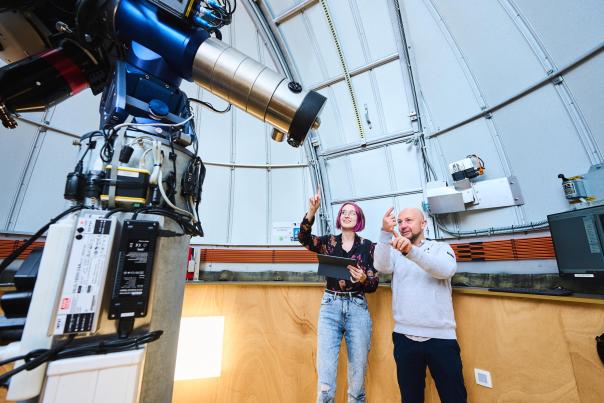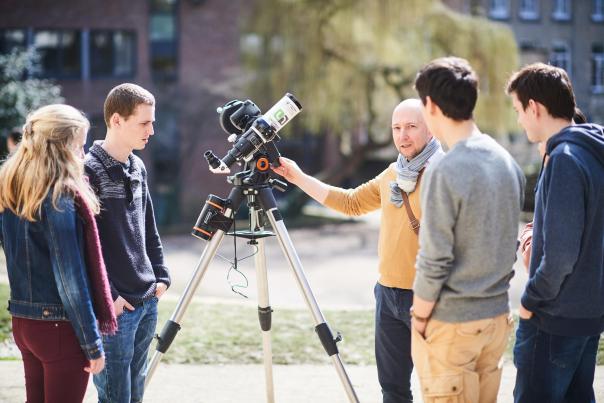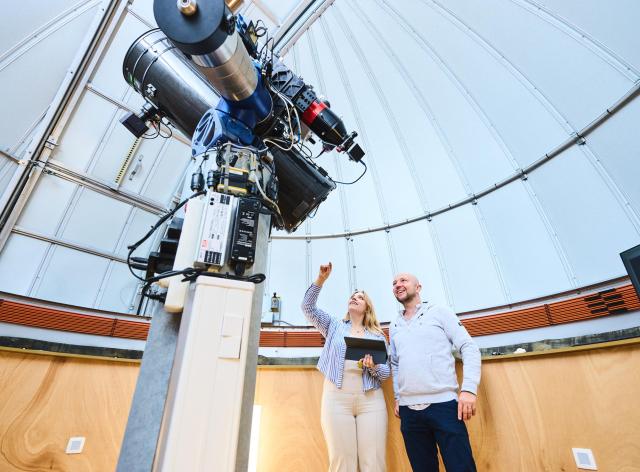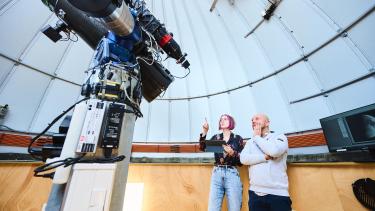The University of Namur's astronomical observatory project is the desire to provide the Walloon capital with a permanent observatory, combined with a higher education, awareness-raising and scientific mediation program open to students, schools and the general public. A dream come true thanks to the generosity of our University's donors and partners.
.The project
The Observatoire Antoine Thomas sj continues a scientific and educational history of astronomy in Namur that goes back more than a century. It promotes the practice of local astronomy, an essential condition for making the sky accessible to all, for an invitation to travel and discover the stars and the sciences. Equipped with exceptional instruments, the observatory offers a unique educational program integrated into several university curricula, as well as continuing education open to all. Discovery activities are regularly organized for schools and the general public by the Confluent of Knowledge, UNamur's scientific mediation unit: observation evenings, lectures, educational workshops...
Pedagogical project for the new observatory
The new observatory at the University of Namur aims to be a place of scientific and cultural mediation open to all. Discovering the wonders of the sky is an unforgettable experience for those who dare to take the plunge. Thanks to its educational project, the observatory enables the public, and young people in particular, to discover the stars with their own eyes, and to learn about the sciences and techniques (optics, mechanics, physics, mathematics, etc.) involved in observing them. Cutting-edge instruments are at their disposal, both on site and remotely, including a large-diameter solar telescope unique in Wallonia for safe daytime observation of the sun, giant telescopes for visual observation, and a high-magnification telescope for nighttime observation of the Moon and stars.
.
Cosmic continuing education!
The observatory offers continuing education open to all. The training provides the basic culture, tools and critical thinking skills to understand the history and current state of the universe and human questions about it, and aims to help students discover the practical side of the sciences and philosophies of the Universe through training in "amateur" astronomy as well as philosophical teachings.

Namur's expertise in astronomy
At the same time, the work of UNamur Faculty researchers in the fields of astronomy, cosmology and celestial mechanics began to enjoy international recognition. Research of excellence and with an international dimension that continues today within the Institut naXys (Namur Institute for Complex Systems) at the University of Namur. In 2012, Professor André Füzfa initiated a new educational dynamic in Namur around the astronomy course, using state-of-the-art equipment and activities to reconnect students with the sky: observations on campus, an annual introductory astronomy course during the Easter vacations in the Gers, or other sessions still open to the general public and schools. These initiatives have met with real success, but are subject to the disadvantages of itinerancy: delicate handling and transport of equipment, adjustments to be made over and over again, the vagaries of the weather...
Your donations in action
The donations received by the observatory are used in full to purchase the equipment and materials needed to make the astronomical dome a place of welcome, discovery and teaching open to all: optical instruments (giant binoculars, telescopes, high-definition cameras...), teaching materials, teaching aids... Thanks to your support, the dream of recreating an astronomical observatory in Namur is a reality!

